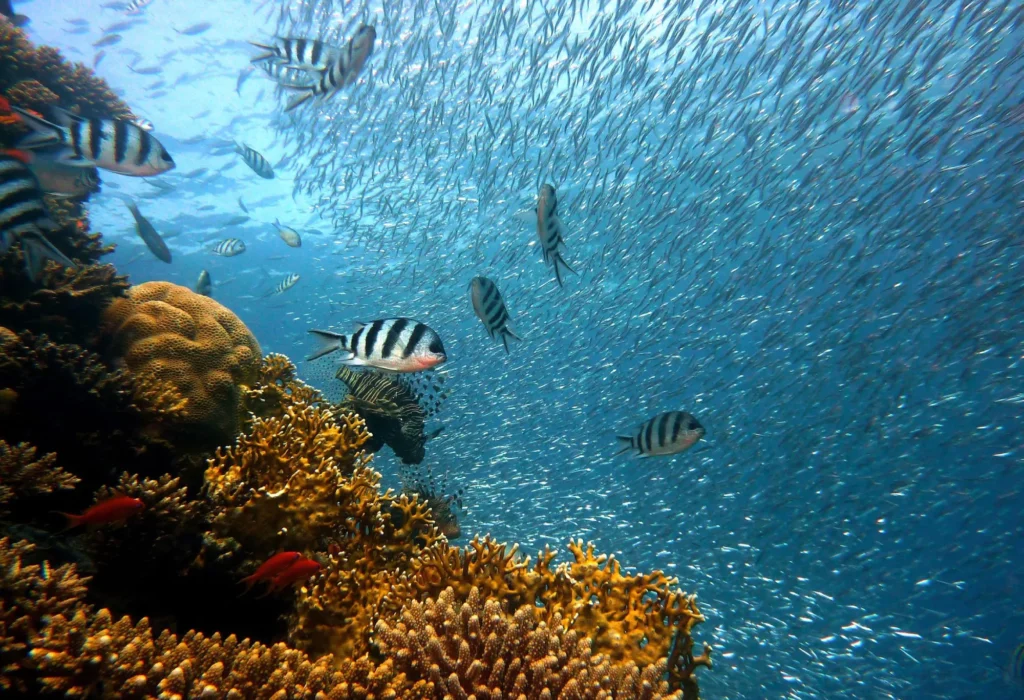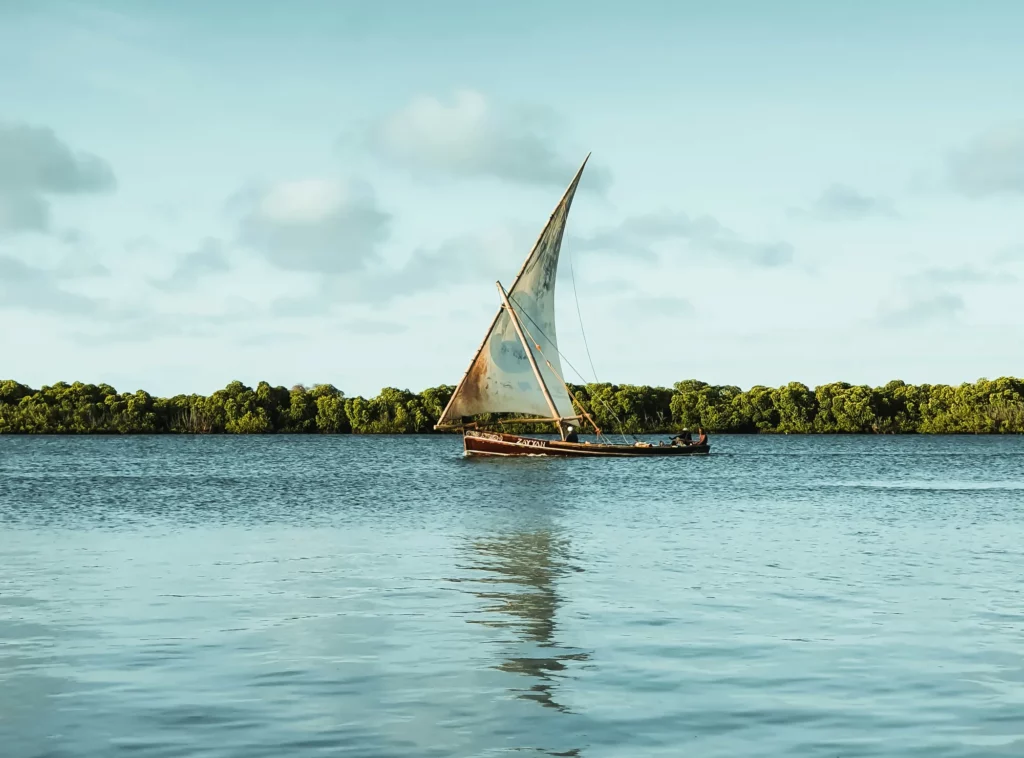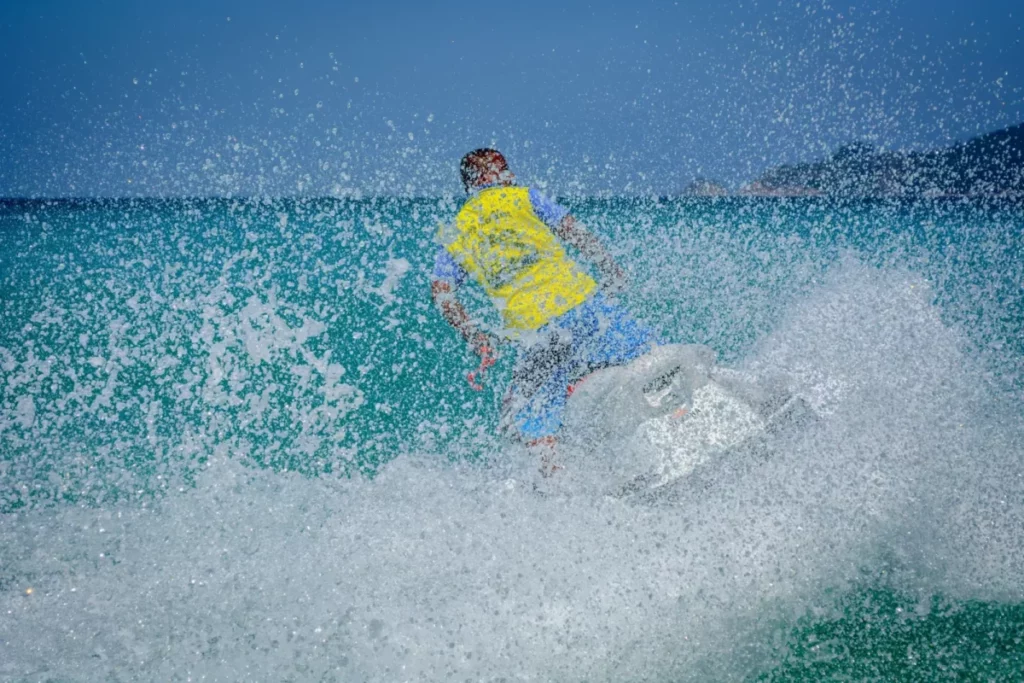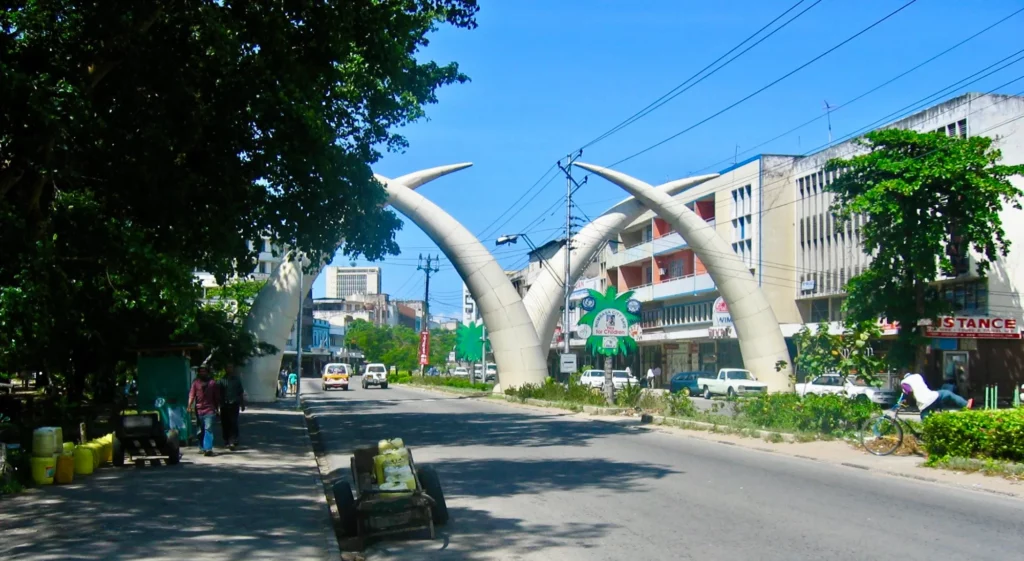Beneath the Waves: Exploring Mombasa’s Hidden Ocean World
When it comes to marine adventures on Kenya’s coast, Mombasa is second to none. Framed by warm Indian Ocean waters, vibrant coral reefs, and thriving marine life, it’s a paradise for snorkeling and diving enthusiasts. Whether you’re new to the world beneath the waves or a seasoned underwater explorer, Mombasa offers some of the most rewarding aquatic experiences in East Africa.
Snorkeling in Mombasa is especially appealing because it’s so accessible. Shallow coral gardens, clear waters, and gentle currents make it ideal for beginners and families. Meanwhile, deeper offshore sites provide more technical challenges for advanced divers — with drop-offs, wrecks, and stunning coral walls teeming with life.
From the Mombasa Marine National Park to secret reef spots along the North and South coasts, this guide will take you through everything you need to know about snorkeling and diving in Mombasa.
Why Snorkeling and Diving in Mombasa Is So Special
A Rich Marine Ecosystem
Mombasa is part of the Coral Triangle, the most biodiverse marine region on earth. The waters here are home to over 250 species of coral, hundreds of reef fish, and fascinating marine creatures like octopus, lionfish, turtles, and rays. You’ll also find healthy populations of moray eels, nudibranchs, and sometimes even dolphins or whale sharks passing through.
Warm Waters Year-Round
With water temperatures ranging between 25°C and 29°C (77°F to 84°F), Mombasa is perfect for both snorkeling and diving at any time of the year. There’s no need for a wetsuit unless you’re diving deep or during the slightly cooler months of July and August.
Protected Marine Parks
Kenya has some of the oldest and most well-established marine parks in Africa, and Mombasa Marine National Park is among the best. These parks are protected zones where fishing and coral harvesting are banned, allowing marine life to thrive and ensuring an incredible underwater experience.
Best Snorkeling Spots in Mombasa

Mombasa Marine National Park
Easily the most popular spot for snorkeling in Mombasa, this protected area lies between Nyali and Bamburi beaches. With shallow coral gardens, calm waters, and stunning visibility, it’s ideal for all skill levels. You’ll encounter colorful reef fish like parrotfish, butterflyfish, and damselfish — often within just a few meters of the surface.
Boat tours typically leave from the beach near Voyager Beach Resort or Serena Beach Resort and take you straight into the marine park. Many operators include gear rental and a guide to help spot marine life.
Highlights: Coral gardens, angelfish, sea urchins, starfish
Accessibility: Boat access; short ride from Nyali or Bamburi
Best time: November–March for the clearest water
Nyali Reef
Nyali Reef, just offshore from Nyali Beach, offers easy snorkeling right from the shore during low tide. It’s less crowded than the marine park and ideal for those who want a quick snorkel session without needing a boat.
Expect to see shallow coral heads, reef fish, and possibly sea cucumbers. This is a great spot for beginner snorkelers or families with kids.
Highlights: Accessible coral heads, calm waters
Accessibility: Walk-in from the beach
Best time: Morning hours, especially at low tide
Shelly Beach (South Coast)
Just across the Likoni Ferry, Shelly Beach is one of Mombasa’s quieter gems. Its calm, clear waters hide small coral patches and plenty of fish, and it’s a favorite among locals who prefer peaceful, uncrowded snorkeling.
It’s also a great entry point for snorkelers heading toward the Kisite-Mpunguti Marine Reserve near Wasini Island — although that’s technically further down the coast.
Highlights: Peaceful surroundings, less-touristy vibe
Accessibility: Ferry + local matatu or taxi
Best time: Early morning, weekdays for fewer crowds
Top Diving Sites Around Mombasa

While snorkeling in Mombasa offers a fantastic surface-level experience, diving reveals an even deeper, more colorful world. Whether you’re PADI certified or looking to do your first-ever dive, Mombasa delivers some epic underwater moments.
MV Dania Wreck (Kisite Area)
Though located further south near Diani and Wasini Island, many Mombasa dive centers offer trips to the MV Dania, a 75-meter cargo ship intentionally sunk in 2002 to create an artificial reef. It’s now teeming with life — giant groupers, barracudas, lionfish, and turtles make regular appearances.
Depth: 12–30 meters
Difficulty: Intermediate to advanced
Highlights: Shipwreck exploration, macro life, schooling fish
Nyali Reef Wall
Beyond its snorkeling zone, Nyali Reef drops into deeper waters that are perfect for diving. This reef wall features healthy coral growth, crevices, and overhangs that attract octopuses, lionfish, and larger pelagics on occasion.
Depth: 8–22 meters
Difficulty: Beginner to intermediate
Highlights: Reef wall, coral bommies, nudibranchs
Coral Gardens & Lagoon Sites (Mombasa Marine Park)
Many of the shallower lagoon sites within the marine park are diveable too — especially great for introductory dives or refresher courses. Expect lots of sunlight filtering through the water, coral patches, and swarms of small reef fish.
Depth: 4–10 meters
Difficulty: Beginner
Highlights: Shallow dives, ideal for training
Dive Shops and Snorkeling Operators in Mombasa
Several reputable centers around Mombasa offer both diving certifications and daily snorkeling trips. Look for operators with PADI or SSI affiliation and good reviews.
Buccaneer Diving
One of Kenya’s most established dive centers, Buccaneer Diving is based at Voyager Beach Resort in Nyali. They offer guided dives, refresher courses, full PADI certification, and regular snorkeling excursions.
Services: Diving, snorkeling, training
Website: buccaneerdiving.com
Location: Nyali
Baracuda Diving
Baracuda is a small but well-rated dive center operating out of Bamburi Beach. They specialize in personalized dive trips and group snorkeling tours. Their guides are known for being especially helpful with beginners.
Services: Intro dives, reef diving, snorkel tours
Location: Bamburi
Kenya Diving Academy
Catering more to the south coast but often partnering with Mombasa hotels, KDA offers trips to deeper dive sites like Kisite and MV Dania. They also run dive safaris for serious underwater explorers.
Services: Advanced diving, dive safaris, equipment rental
Location: Mobile bookings
When to Go: Best Time for Snorkeling and Diving in Mombasa
Snorkeling and diving in Mombasa are possible all year round, thanks to consistently warm waters and a tropical climate. However, some months offer better conditions than others for visibility, marine encounters, and overall comfort in the water.
The best time to visit for underwater activities is between November and March, when the seas are at their calmest and visibility can reach up to 30 meters — ideal for both reef snorkeling and deeper dives. During this period, you’re also more likely to spot a greater variety of marine life due to the clearer water and warmer conditions.
From June to August, the waters remain diveable, but conditions can be a bit cooler and the sea may be slightly choppier. That said, it’s still a good time to visit if you don’t mind a bit of motion and want to avoid the holiday crowds.
It’s generally best to avoid April and May, which mark the peak of the long rains season. Heavy rainfall and wind during these months tend to stir up sediment, reducing underwater visibility and making sea conditions less predictable. Many operators scale down their activities during this time, so it’s worth planning around it if snorkeling or diving is a priority on your trip.
Marine Life You’ll Encounter

Whether you’re snorkeling in the shallow lagoons or diving the deeper reefs off Mombasa’s coast, the underwater biodiversity is truly remarkable. Kenya’s coastal waters are part of the larger Western Indian Ocean marine ecoregion, offering a mosaic of species found nowhere else.
Fish Species Galore
Expect to swim alongside schools of yellowtail snappers, sergeant majors, parrotfish, wrasses, and triggerfish. You’ll also spot lionfish fanning their spines near coral heads, groupers resting in crevices, and needlefish darting near the surface.
Snorkelers often see clownfish dancing in anemones and the occasional pufferfish cruising through coral gardens. For divers, encounters with barracudas, trevallies, and blue-spotted stingrays add to the thrill.
Larger Encounters
While not guaranteed, lucky divers might spot hawksbill turtles, green sea turtles, or even reef sharks around deeper reefs and wrecks. Seasonal sightings of whale sharks and dolphins also occur, especially in areas closer to Wasini and Kisite.
Coral and Invertebrates
The coral gardens off Mombasa include both hard and soft coral species. Staghorn, brain, mushroom, and plate corals dominate the reef structures, creating complex habitats for marine life. Watch closely for octopuses, nudibranchs, starfish, and the colorful Christmas tree worms that disappear with a flick.
Snorkeling vs. Diving in Mombasa: Which One’s Right for You?
Both activities offer an amazing glimpse into the Indian Ocean’s underwater world, but the right one for you depends on time, budget, comfort level, and experience.
Snorkeling: Easy, Affordable, Family-Friendly

Snorkeling is ideal for casual travelers, families, and those who want to experience marine life without special training or certification. The shallow coral gardens of Mombasa Marine Park or Nyali Reef are perfect for beginners and kids, requiring nothing more than a mask, snorkel, and fins.
It’s also one of the most flexible things to do in Mombasa, with short trips available directly from the beach or via quick boat rides. Visibility is often excellent, and the sheer diversity of fish in the shallows makes it incredibly rewarding.
Diving: Deeper Exploration, Big Rewards
Diving, on the other hand, takes you into a more immersive, otherworldly experience. Certified divers can explore vertical reef walls, drop-offs, and shipwrecks that are inaccessible to snorkelers. The MV Dania wreck, Nyali Deep, and coral drop-offs near Bamburi are some of the top dive sites within reach of Mombasa.
If you’re not certified yet, most local dive centers offer PADI Discover Scuba Diving courses that include a pool session and a shallow reef dive. It’s a great way to test the waters before committing to a full certification course.
Family-Friendly Snorkeling Activities
Families traveling with kids will find plenty of options that combine safety, fun, and educational value.
Glass-Bottom Boat Tours
Glass-bottom boats are popular around Mombasa Marine Park, especially for those traveling with young children or non-swimmers. These boats offer clear views of the reef without needing to jump into the water. Some operators allow guests to snorkel directly off the boat in shallow lagoons.
Combo Tours
Many local operators offer combo tours that include snorkeling, dolphin spotting (especially further south), and beach picnics on sandbanks. These trips are ideal for mixed groups and can easily be tailored to your comfort level.
Safety Considerations
Most snorkeling tours provide life jackets, and guides are experienced in handling both children and beginners. Still, it’s always a good idea to ensure everyone wears protective gear, including reef-safe sunscreen and water shoes to guard against coral cuts or sea urchins.
Eco Guidelines and Marine Conservation Tips
Mombasa’s coral reefs are fragile ecosystems, and preserving them is vital for both biodiversity and tourism. Responsible snorkeling and diving ensure that future generations can enjoy these same experiences.
- Do not touch or stand on coral. Even brief contact can kill delicate coral polyps.
- Avoid feeding fish or chasing marine animals.
- Use reef-safe sunscreen that doesn’t contain harmful chemicals like oxybenzone and octinoxate.
- Take only photos — never shells, starfish, or sand as souvenirs.
- Support eco-conscious tour operators who adhere to marine park regulations.
You can also visit organizations like the Kenya Marine and Fisheries Research Institute (KMFRI), which offers information on marine conservation initiatives and sometimes hosts public outreach events.
What to Pack for Snorkeling and Diving in Mombasa
Most dive centers and tour operators provide all necessary gear, but packing a few essentials will make your experience smoother and more enjoyable.
- Mask and snorkel (personal gear for better hygiene and fit)
- Reef-safe sunscreen
- Water shoes or reef booties
- Rash guard or long-sleeved swim shirt for sun protection
- Waterproof phone pouch or GoPro
- Quick-dry towel
- Refillable water bottle
- Waterproof bag for wet clothes
If you plan to dive more than once, consider bringing your own dive computer and mask for comfort and consistency.
Final Travel Tips for Ocean Lovers
Booking Ahead
While it’s possible to book snorkeling and diving tours on the spot, reserving in advance during peak seasons (December–February and July–August) ensures availability. Many hotels in Nyali, Bamburi, and Shanzu have on-site water sports desks or partnerships with local operators.
Marine Park Fees
Kenya Wildlife Service (KWS) charges an entry fee for protected areas like Mombasa Marine National Park. For non-residents, it’s typically $15–20 per adult, with discounts for children. This fee is usually included in your tour package but always confirm beforehand.
Combine Ocean and Culture
Round out your day in the water with a stop at nearby attractions. After snorkeling in Nyali, visit Haller Park or Bombolulu Cultural Centre. If diving near Old Town, follow it up with a sunset meal at Tamarind or a stroll along the English Point Marina boardwalk.
Where to Stay for Easy Access to Snorkeling and Diving
Choosing the right base can make all the difference if you’re planning to fill your days with underwater adventures. Luckily, Mombasa has a wide range of beach resorts, boutique hotels, and budget stays that are within minutes of top snorkeling and diving spots.
Nyali Beach
Nyali is the top choice for proximity to Mombasa Marine Park and several dive centers. Resorts like Voyager Beach Resort and Nyali Sun Africa offer direct beach access and on-site tour desks. You’ll be able to roll out of bed and into the ocean in minutes.
Recommended for: Snorkelers, beginners, families
Bamburi Beach
Bamburi has a vibrant vibe with beach bars, restaurants, and excellent diving access. Hotels like Sarova Whitesands and Severin Sea Lodge partner with local dive schools and often host certification courses.
Recommended for: Certified divers, couples, active travelers
Shanzu and Mtwapa
Further north, Shanzu and Mtwapa offer quieter accommodations and access to less crowded reefs. Serena Beach Resort is home to Jahazi Grill and offers a serene atmosphere ideal for relaxing after your ocean explorations.
Recommended for: Tranquility, upscale stays, food lovers
Old Town and Tudor Area
If you prefer staying in a more cultural and historic setting while still being close to Tamarind, the dhow cruise, and the marina, Old Town is a great base. While it’s not on the beach, it puts you within a short ride of Nyali’s watersports action.
Recommended for: Culture lovers, foodies, urban explorers
Quick Snorkeling and Diving Itineraries
One-Day Snorkeling Trip
- Morning: Glass-bottom boat tour and snorkeling at Mombasa Marine Park
- Lunch: Beachside meal at a Nyali or Bamburi resort
- Afternoon: Visit Haller Park or relax at English Point Marina
- Dinner: Seafood feast at Tamarind or floating on the Tamarind Dhow
Weekend Diving Getaway
- Day 1: Check into a beach resort, do a shore dive or pool refresher
- Day 2: Early morning double tank dive (e.g. Nyali Deep + Coral Garden)
- Afternoon: Relaxation and beach bar-hopping at Bamburi
- Day 3: Optional third dive or snorkeling, followed by souvenir shopping at Akamba Handicrafts
Snorkeling and Diving: A Gateway to Mombasa’s Soul
Beneath the surface of Mombasa’s turquoise waters lies a world of dazzling color, motion, and serenity — one that offers a totally different perspective on the coast. Whether you’re gently drifting over coral gardens with a snorkel or plunging into the depths of a historic shipwreck, the Indian Ocean has something transformative to offer.
It’s one of the most captivating things to do in Mombasa, and it ties together everything the coast represents: biodiversity, beauty, culture, and connection to the sea. You don’t have to be a professional diver or an adrenaline junkie to experience it. All you need is a sense of adventure and a willingness to explore.
So pack your fins, grab your mask, and dive in. Mombasa’s marine world is waiting — and it just might change the way you see the ocean forever.
Mombasa’s Underwater Allure: More Than Just a Beach
In a region known for history, spice, and sun-drenched shores, snorkeling and diving elevate your experience to something unforgettable. You’ll leave with salt in your hair, stories of sea turtles and coral cities, and maybe even a new obsession.
Many travelers rave about diving off the shores of Zanzibar — and for good reason. But what often goes overlooked is that Mombasa offers equally rich marine diversity, with fewer crowds and easier access to both shallow reefs and deep dive sites. If you’ve explored the blue depths off Kendwa or Nungwi, diving in Mombasa will feel like discovering the other half of the story — just as vibrant, a little more rugged, and deeply rewarding.
Whether it’s your first time floating above a reef or your hundredth descent into the deep blue, Mombasa has something magical to offer. And after a day in the water, you can toast your adventure at a rooftop bar, dine on fresh seafood with a view, or sail into the sunset on a dhow.
Because here, the ocean isn’t just something to look at — it’s something to do.




